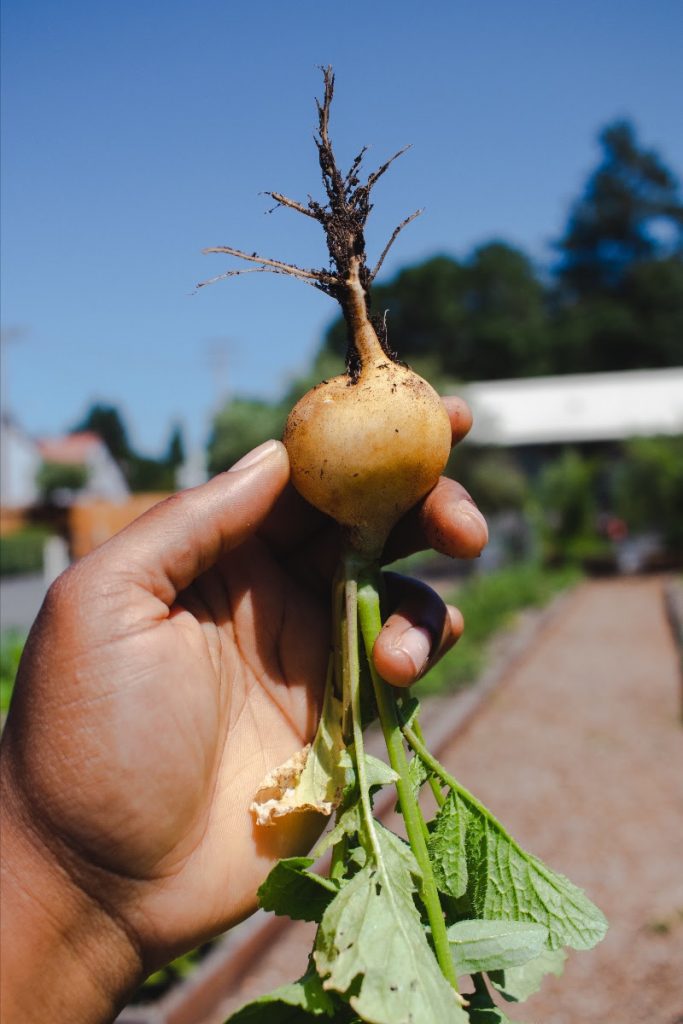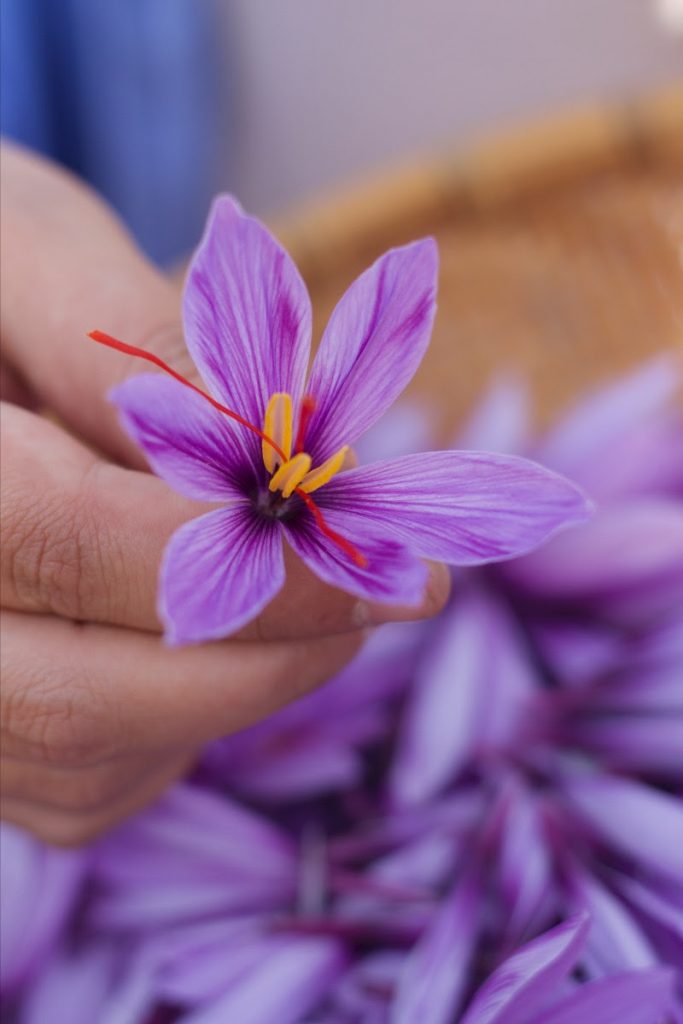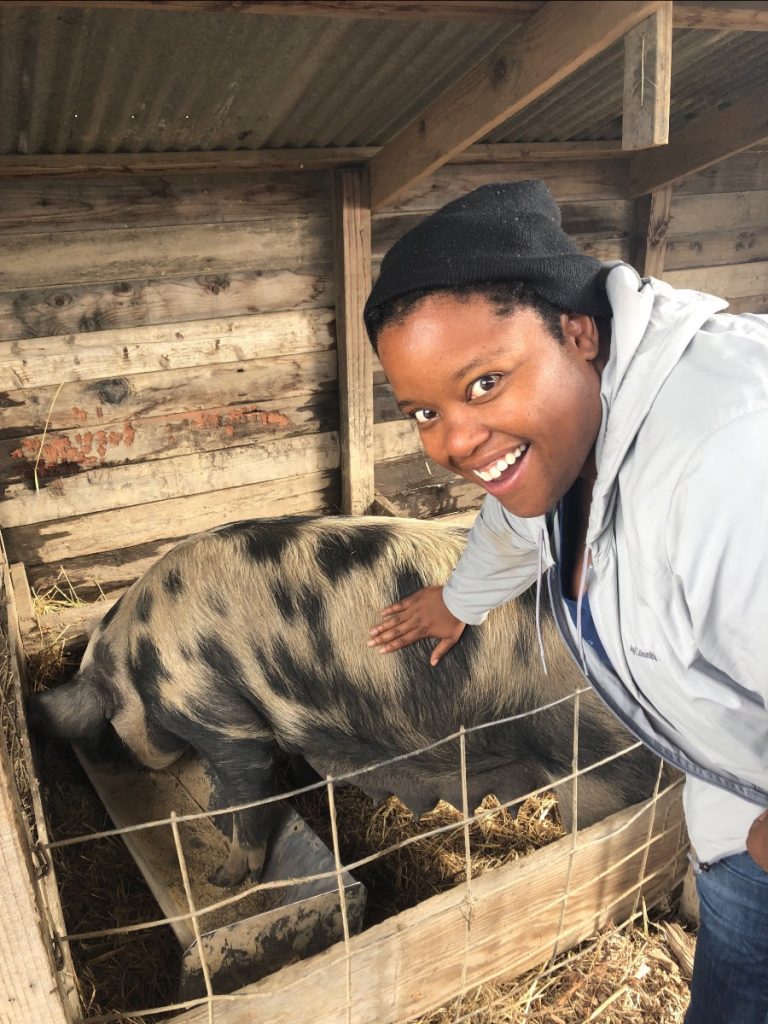August 2019 | Farming – It’s easy to gloss over the issues in farming and just say, “Here’s a pretty vegetable.”

I met Kiley while she was working at my local produce store. We chatted and I discovered her passions were farming and photography. So, I invited her to talk about her experiences on her day off. Kiley had set out while living in Oakland, some years ago, to become a farmer. She and her wife moved to Sonoma County and Kiley, who already had a geography degree, completed the Sustainable Agriculture program at Santa Rosa Junior College. She had three jobs on different farms. Each situation ended up being seasonal and had its difficulties.
Kiley “grew up in South Central Los Angeles in the ‘80’s and ‘90’s with limited access to fresh fruits and vegetables. My mom would drive 20-30 minutes to the nearest grocery store that sold anything worth eating. The only reference I had to anyone taking care of their own food were my Mexican and Latina neighbors who were growing vegetables, fruit trees, or had chickens.” (Urban Exodus interview, 2018.)
We began our conversation when I asked Kiley about food and farming.
I’m interested in taking care of basic needs, such as, feeding yourself in a way that’s healthy, also for the planet and for the community. I view this as regenerative work, going for something greater rather than simply sustainable, which to me means the status quo. How do I connect that with people?

Farming forms a nexus where you get to connect with a lot of issues: access to food, land, generational inheritance. Farming also relates to housing, even where farms are located. Who’s going to help maintain the farm? It’s a challenge because, where will your workers live? How do you provide proper wages and charge the true cost of food?
It’s easy to gloss over the issues in farming and just say, “Here’s a pretty vegetable.” I think about all these issues on a daily basis.
There’s a California Farm data base that gives you access to people who have land. I’ve looked at pieces of land where there’s no electricity or water, or the land is in three-quarters shade all day.
I was allowed one-eighth of an acre in my last farm job for a non-profit, in return for educating children in gardening. I started a CSA (Community Supported Agriculture) with fifteen members. The non-profit’s grant ended suddenly, and so did my work.
Last winter was really tough with all the rain. It got harder to pay the bills. There’s no guarantee that a farm will take you back. Working at the produce store is a way for me to step back a little and save some money.
I’m being asked to do some event photography at farms. I get to exercise my arty side, and to overcome my art shame by sharing on Instagram. I wanted to take photography in high school, but my family couldn’t afford a camera. Finally, at age 38, I can afford one! I started sharing these photos on my Instagram account in 2016 thinking they would be part of my farming resume. Now I’m contacted by people who see my photos.

Farming teaches you patience, delayed gratification. You put in all the work and then you have to wait. You need faith that seeds will pop up and you’ll be able to sell your produce.
I experience a sense of freedom being outside in the free-flowing air. Being African American, there’s a lot of pain in farming, going back to our work as slaves. So, it can be seen as something to avoid. We’ve lost a lot of freedom with others telling us what to eat.
When you plant seeds in a row, there’s a connection to the planet, between earth, air, and stars. I’m interested in Biodynamics, the right time to plant…The leaves have antennae to the universe.
Since we talked, Kiley handed in her notice at the store and is making it with an increased demand for her photography and other side-jobs.
You can visit Kiley’s Instagram photos at this link.
This is so inspiring. I have just come in from my garden, with whose plants and birds and insects I am in communication. I feel such love for nature, I hope it spreads beyond my garden to all living beings.

study the masters
like my aunt timmie.
it was her iron,
or one like hers,
that smoothed the sheets
the master poet slept on.
home or hotel, what matters is
he lay himself down on her handiwork
and dreamed. she dreamed too, words:
some cherokee, some masai, and some
huge and particular as hope.
if you had heard her
chanting as she ironed
you would understand form and line
and discipline and order and
america.
Lucille Clifton from Blessing the Boats (2000)
Receive the Earth-Love Newsletter, event invitations, and always a poem.
